接着第四课的内容,加入部分第五课的内容,主要介绍树形dp和LRU
第一题:
给定一棵二叉树的头节点head,请返回最大搜索二叉子树的大小
二叉树的套路
统一处理逻辑:假设以每个节点为头的这棵树,他的最大搜索二叉子树是什么。答案一定在其中
第一步,列出可能性(最难部分)
1、可能来自左子树上的某课子树
2、可能来自右子树上的某课子树
3、整颗都是(左右子树都是搜索二叉树并且左子树最大小于该节点,右子树最小大于该节点)

第二步,收集信息:
1、左树最大搜索子树大小
2、右树最大搜索子树大小
3、左树最大二叉搜索子树的头部(通过查看这个头部是否等于节点的左孩子,来判断整个左子树是否都是二叉搜索树)
4、右树最大二叉搜索子树的头部
5、左树最大值
6、右树最小值
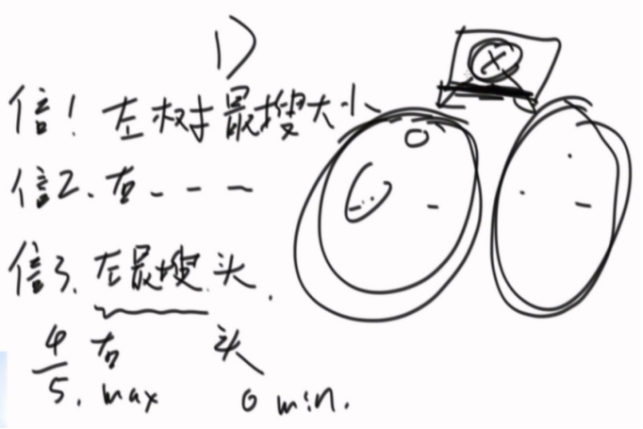
化简为一个信息体:
1、左/右搜大小
2、左/右搜头
3、左max
4、右min
不管左树还是右树都存储
1、最大搜索子树大小
2、最大搜索子树的头部
3、这棵树上的最大值和最小值
如果不理解可以看引子题(很简单的)
一棵树中找最大最小
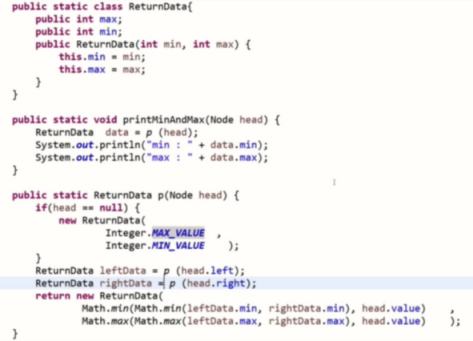
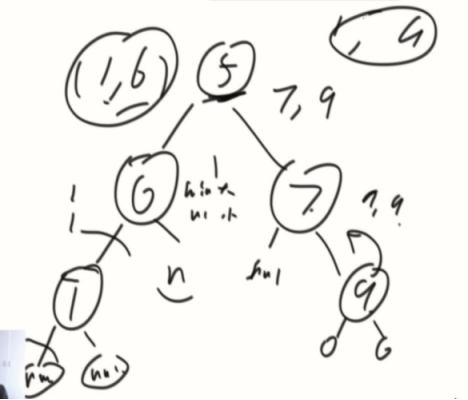
第三步,改递归(比较复杂)
先假设左和右都给我这样的信息了,然后怎么利用左边和右边的信息,组出来我该返回的信息。最后baseKey填什么,搞定!
public class Code_04_BiggestSubBSTInTree { public static class Node { public int value; public Node left; public Node right; public Node(int data) { this.value = data; } } public static Node biggestSubBST(Node head) { int[] record = new int[3]; // 0->size, 1->min, 2->max return posOrder(head, record); } public static class ReturnType{ public int size; public Node head; public int min; public int max; public ReturnType(int a, Node b,int c,int d) { this.size =a; this.head = b; this.min = c; this.max = d; } } public static ReturnType process(Node head) { if(head == null) { //设置系统最大最小为了不干扰判断最大最小的决策 return new ReturnType(0,null,Integer.MAX_VALUE, Integer.MIN_VALUE); } Node left = head.left; ReturnType leftSubTressInfo = process(left);//当成一个黑盒 Node right = head.right; ReturnType rightSubTressInfo = process(right); int includeItSelf = 0; if(leftSubTressInfo.head == left &&rightSubTressInfo.head == right && head.value > leftSubTressInfo.max && head.value < rightSubTressInfo.min ) { includeItSelf = leftSubTressInfo.size + 1 + rightSubTressInfo.size; } int p1 = leftSubTressInfo.size; int p2 = rightSubTressInfo.size; //解黑盒的过程 int maxSize = Math.max(Math.max(p1, p2), includeItSelf); Node maxHead = p1 > p2 ? leftSubTressInfo.head : rightSubTressInfo.head; if(maxSize == includeItSelf) { maxHead = head; } return new ReturnType(maxSize, maxHead, Math.min(Math.min(leftSubTressInfo.min,rightSubTressInfo.min),head.value), Math.max(Math.max(leftSubTressInfo.max,rightSubTressInfo.max),head.value)); } //数组实现版本 public static Node posOrder(Node head, int[] record) { if (head == null) { record[0] = 0; record[1] = Integer.MAX_VALUE; record[2] = Integer.MIN_VALUE; return null; } int value = head.value; Node left = head.left; Node right = head.right; Node lBST = posOrder(left, record); int lSize = record[0]; int lMin = record[1]; int lMax = record[2]; Node rBST = posOrder(right, record); int rSize = record[0]; int rMin = record[1]; int rMax = record[2]; record[1] = Math.min(rMin, Math.min(lMin, value)); // lmin, value, rmin -> min record[2] = Math.max(lMax, Math.max(rMax, value)); // lmax, value, rmax -> max if (left == lBST && right == rBST && lMax < value && value < rMin) { record[0] = lSize + rSize + 1; return head; } record[0] = Math.max(lSize, rSize); return lSize > rSize ? lBST : rBST; } // for test -- print tree public static void printTree(Node head) { System.out.println("Binary Tree:"); printInOrder(head, 0, "H", 17); System.out.println(); } public static void printInOrder(Node head, int height, String to, int len) { if (head == null) { return; } printInOrder(head.right, height + 1, "v", len); String val = to + head.value + to; int lenM = val.length(); int lenL = (len - lenM) / 2; int lenR = len - lenM - lenL; val = getSpace(lenL) + val + getSpace(lenR); System.out.println(getSpace(height * len) + val); printInOrder(head.left, height + 1, "^", len); } public static String getSpace(int num) { String space = " "; StringBuffer buf = new StringBuffer(""); for (int i = 0; i < num; i++) { buf.append(space); } return buf.toString(); } public static void main(String[] args) { Node head = new Node(6); head.left = new Node(1); head.left.left = new Node(0); head.left.right = new Node(3); head.right = new Node(12); head.right.left = new Node(10); head.right.left.left = new Node(4); head.right.left.left.left = new Node(2); head.right.left.left.right = new Node(5); head.right.left.right = new Node(14); head.right.left.right.left = new Node(11); head.right.left.right.right = new Node(15); head.right.right = new Node(13); head.right.right.left = new Node(20); head.right.right.right = new Node(16); printTree(head); Node bst = biggestSubBST(head); printTree(bst); } }
第二题,继续套路:
二叉树中,一个节点可以往上走和往下走,那么从节点A总能走到节点B。
节点A走到节点B的距离为:A走到B最短路径上的节点个数。
求一棵二叉树上的最远距离
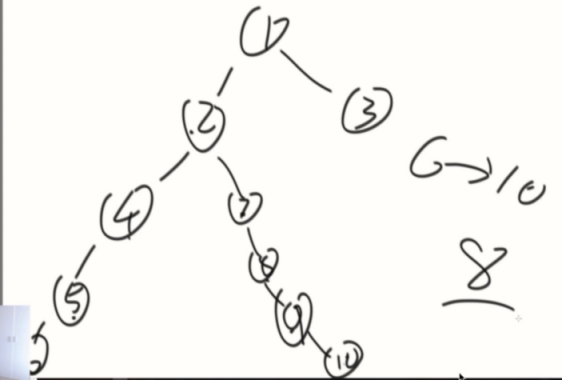
列可能性:
1、来自左子树最长距离
2、来自右子树最长距离
3、经过X的情况下的最远距离,左树最深+右树最深+1
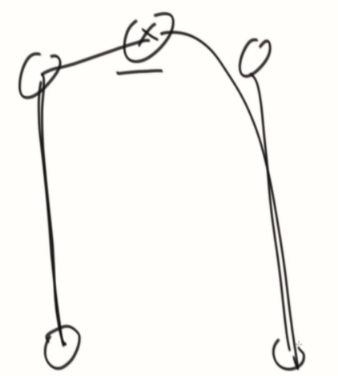
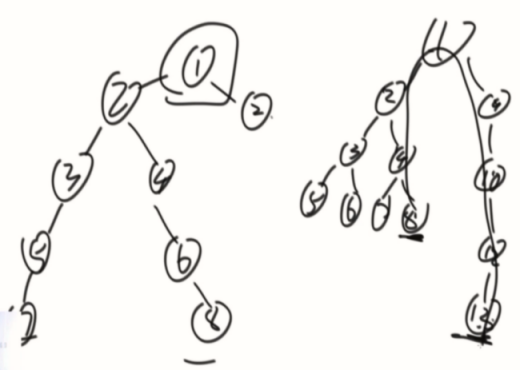
收集信息:
1、最长距离
2、深度
public class Code_03_MaxDistanceInTree { public static class Node { public int value; public Node left; public Node right; public Node(int data) { this.value = data; } } public static int maxDistance(Node head) { int[] record = new int[1]; return posOrder(head, record); } public static class ReturnType{ public int maxDistance; public int h; public ReturnType(int m, int h) { this.maxDistance = m; this.h = h; } } public static ReturnType process(Node head) { if(head == null) { return new ReturnType(0,0); } ReturnType leftReturnType = process(head.left); ReturnType rightReturnType = process(head.right); int includeHeadDistance = leftReturnType.h + 1 + rightReturnType.h; int p1 = leftReturnType.maxDistance; int p2 = rightReturnType.maxDistance; int resultDistance = Math.max(Math.max(p1, p2), includeHeadDistance); int hitSelf = Math.max(leftReturnType.h, leftReturnType.h) + 1; return new ReturnType(resultDistance, hitSelf); } public static int posOrder(Node head, int[] record) { if (head == null) { record[0] = 0; return 0; } int lMax = posOrder(head.left, record); int maxFromLeft = record[0]; int rMax = posOrder(head.right, record); int maxFromRight = record[0]; int curNodeMax = maxFromLeft + maxFromRight + 1; record[0] = Math.max(maxFromLeft, maxFromRight) + 1; return Math.max(Math.max(lMax, rMax), curNodeMax); } public static void main(String[] args) { Node head1 = new Node(1); head1.left = new Node(2); head1.right = new Node(3); head1.left.left = new Node(4); head1.left.right = new Node(5); head1.right.left = new Node(6); head1.right.right = new Node(7); head1.left.left.left = new Node(8); head1.right.left.right = new Node(9); System.out.println(maxDistance(head1)); Node head2 = new Node(1); head2.left = new Node(2); head2.right = new Node(3); head2.right.left = new Node(4); head2.right.right = new Node(5); head2.right.left.left = new Node(6); head2.right.right.right = new Node(7); head2.right.left.left.left = new Node(8); head2.right.right.right.right = new Node(9); System.out.println(maxDistance(head2)); } }
扩充:如果是计算两个固定节点a~b的距离,需要找出他们的最近公共祖先,然后计算a~公共祖先+b~公共祖先。
第三题
一个公司的上下节关系是一棵多叉树,这个公司要举办晚会,你作为组织者已经摸清了大家的心理:一个员工的直接上级如果到场,这个员工肯定不会来。每个员工都有一个活跃度的值,决定谁来你会给这个员工发邀请函,怎么让舞会的气氛最活跃?返回最大的活跃值。
举例:
给定一个矩阵来表述这种关系
matrix =
{
1,6
1,5
1,4
}
这个矩阵的含义是:
matrix[0] = {1 , 6},表示0这个员工的直接上级为1,0这个员工自己的活跃度为6
matrix[1] = {1 , 5},表示1这个员工的直接上级为1(他自己是这个公司的最大boss),1这个员工自己的活跃度为5
matrix[2] = {1 , 4},表示2这个员工的直接上级为1,2这个员工自己的活跃度为4
为了让晚会活跃度最大,应该让1不来,0和2来。最后返回活跃度为10
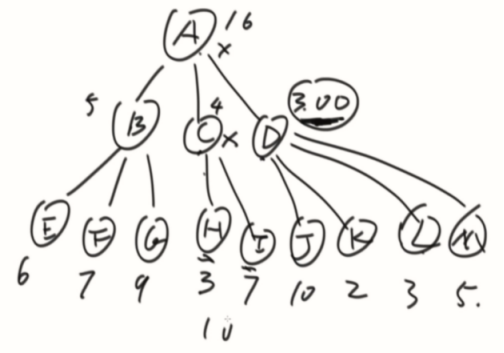
可能性
1、X来,活跃度就是x活跃度+x1不来+x2不来+x3不来的总和。
2、X不来,活跃度就是x1/x2/x3来和不来中选最大的总和。
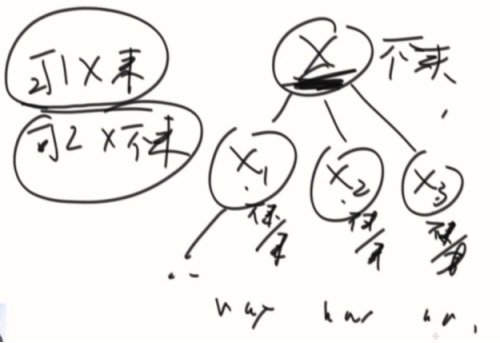
收集信息:
1、一棵树在头结点来的活跃度
2、一棵树在头结点不来的活跃度
public class Code_04_MaxHappy { public static class Node{ public int happy; public ArrayList<Node> nexts; public Node(int happy){ this.happy = happy; nexts = new ArrayList<Node>(); } } public static class ReturnData{ public int comeHappy; public int notComeHappy; public ReturnData(int c,int nc){ comeHappy = c; notComeHappy = nc; } } public static ReturnData process(Node head){ int comeHappy = head.happy; int notComeHappy = 0; for (int i = 0;i!=head.nexts.size();i++){ ReturnData data = process(head.nexts.get(i)); comeHappy += data.notComeHappy; notComeHappy += Math.max(data.notComeHappy,data.comeHappy); } return new ReturnData(comeHappy,notComeHappy); } public static int calcMaxHappy(Node head){ ReturnData data = process(head); return Math.max(data.comeHappy, data.notComeHappy); } //下面是用数组结构去求 public static int maxHappy(int[][] matrix) { int[][] dp = new int[matrix.length][2]; boolean[] visited = new boolean[matrix.length]; int root = 0; for (int i = 0; i < matrix.length; i++) { if (i == matrix[i][0]) { root = i; } } process(matrix, dp, visited, root); return Math.max(dp[root][0], dp[root][1]); } public static void process(int[][] matrix, int[][] dp, boolean[] visited, int root) { visited[root] = true; dp[root][1] = matrix[root][1]; for (int i = 0; i < matrix.length; i++) { if (matrix[i][0] == root && !visited[i]) { process(matrix, dp, visited, i); dp[root][1] += dp[i][0]; dp[root][0] += Math.max(dp[i][1], dp[i][0]); } } } public static void main(String[] args) { int[][] matrix = { { 1, 8 }, { 1, 9 }, { 1, 10 } }; System.out.println(maxHappy(matrix)); } }
上述所有题目都叫树形dp。(列可能性)
思路:小树计算完,再算父亲树。
summary(总结)
1、分析可能性(先计算小树,再计算大树)
2、列信息全集,定下返回值结构。
3、编写代码的时候,默认每颗子树都给你这样的信息,然后看拿到这些子树信息后怎么加工出父的信息。
4、basekey要单独考虑一下,作为最简单的情况,要给父返回啥,不至于让他干扰。
第四题:(基础班讲过)
判断一棵树是否是平衡二叉树
public class c04_04IsBalancedTree { public static class Node { public int value; public Node left; public Node right; public Node(int data) { this.value = data; } } public static class ReturnData{ public boolean isBalance; public int level; public ReturnData(boolean isBalance, int level) { this.isBalance = isBalance; this.level = level; } } public static ReturnData process(Node head){ if(head == null){ return new ReturnData(true,0); } //如果左子树或者右子树返回了他们不是平衡的,那总体也不会是平衡的 ReturnData lRData = process(head.left); if(!lRData.isBalance){ return new ReturnData(true,0); } ReturnData rRData = process(head.right); if(!rRData.isBalance){ return new ReturnData(true,0); } if(Math.abs(lRData.level - rRData.level) > 1){ return new ReturnData(true,0); } return new ReturnData(true,Math.max(lRData.level,rRData.level)+1); } public static void main(String[] args) { Node head = new Node(1); head.left = new Node(2); head.right = new Node(3); head.left.left = new Node(4); head.left.right = new Node(5); head.right.left = new Node(6); head.right.right = new Node(7); System.out.println(process(head).isBalance); } }
第五题:
数据结构设计题(LeetCode中等难度)难在code上
设计可以变更的缓存结构(LRU)(经常使用的留下)
【题目】
设计一种缓存结构,该结构在构造时确定大小,假设大小为K,并有两个功能:
set(key,value):将记录(key,value)插入该结构。
get(key):返回key对应的value值。
【要求】
1.set和get方法的时间复杂度为O(1)。
2.某个key的set或get操作一旦发生,认为这个key的记录成了最经常使用的。
3.当缓存的大小超过K时,移除最不经常使用的记录,即set或get最久远的。
【举例】
假设缓存结构的实例是cache,大小为3,并依次发生如下行为:
1.cache.set("A",1)。最经常使用的记录为("A",1)。
2.cache.set("B",2)。最经常使用的记录为("B",2),("A",1)变为最不经常的。
3.cache.set("C",3)。最经常使用的记录为("C",2),("A",1)还是最不经常的。
4.cache.get("A")。最经常使用的记录为("A",1),("B",2)变为最不经常的。
5.cache.set("D",4)。大小超过了3,所以移除此时最不经常使用的记录("B",2),加入记录 ("D",4),并且为最经常使用的记录,然后("C",2)变为最不经常使用的记录

思路:hash表(key,Node<key,value>内存地址)+定制的双向链表(尾加头出)

加入的时候先把节点从环境分离,挂到最后,再重连其他节点。
有一个size记录大小,在删的时候可以通过head指针把优先级最低的删除,再根据key到hash里面寻找并彻底删除。
public class Code_02_LRU { public static class Node<K,V> { public K key; public V value; public Node<K,V> last; public Node<K,V> next; public Node(K key,V value) { this.key = key; this.value = value; } } //定制的双向链表 public static class NodeDoubleLinkedList<K,V> { private Node<K,V> head; private Node<K,V> tail; public NodeDoubleLinkedList() { this.head = null; this.tail = null; } public void addNode(Node<K,V> newNode) { if (newNode == null) { return; } if (this.head == null) { this.head = newNode; this.tail = newNode; } else {//最新的添加到尾部 this.tail.next = newNode; newNode.last = this.tail;//新节点的前一个是之前的尾部 this.tail = newNode; } } //操作节点后把结点调整在尾部 public void moveNodeToTail(Node<K,V> node) { if (this.tail == node) { return; } //先把节点从环境分离 if (this.head == node) { this.head = node.next; this.head.last = null; } else {//中间的普遍节点 node.last.next = node.next; node.next.last = node.last; } node.last = this.tail; node.next = null; this.tail.next = node; this.tail = node; } //容量满了删除最不经常操作的数 public Node<K,V> removeHead() { if (this.head == null) { return null; } Node<K,V> res = this.head; if (this.head == this.tail) {//只有一个节点 this.head = null; this.tail = null; } else { this.head = res.next; res.next = null; this.head.last = null; } return res; } } public static class MyCache<K, V> { //通过key可以找到Node private HashMap<K, Node<K,V>> keyNodeMap; private NodeDoubleLinkedList<K,V> nodeList; private int capacity; public MyCache(int capacity) { if (capacity < 1) { throw new RuntimeException("should be more than 0."); } this.keyNodeMap = new HashMap<K, Node<K,V>>(); this.nodeList = new NodeDoubleLinkedList<K,V>(); this.capacity = capacity; } public V get(K key) { if (this.keyNodeMap.containsKey(key)) { Node<K,V> res = this.keyNodeMap.get(key); this.nodeList.moveNodeToTail(res); return res.value; } return null; } public void set(K key, V value) { if (this.keyNodeMap.containsKey(key)) { Node<K,V> node = this.keyNodeMap.get(key); node.value = value; this.nodeList.moveNodeToTail(node); } else {//没有就新增 Node<K,V> newNode = new Node<K,V>(key,value); this.keyNodeMap.put(key, newNode); this.nodeList.addNode(newNode); if (this.keyNodeMap.size() == this.capacity + 1) { this.removeMostUnusedCache(); } } } private void removeMostUnusedCache() { Node<K,V> removeNode = this.nodeList.removeHead();//取出优先级最低的 K removeKey = removeNode.key; this.keyNodeMap.remove(removeKey); } } public static void main(String[] args) { MyCache<String, Integer> testCache = new MyCache<String, Integer>(3); testCache.set("A", 1); testCache.set("B", 2); testCache.set("C", 3); System.out.println(testCache.get("B")); System.out.println(testCache.get("A")); testCache.set("D", 4); System.out.println(testCache.get("D")); System.out.println(testCache.get("C")); } }
就是有限的几个结构组成出来。(链表、hash)

自定义的Node,Map会存内存地址(8字节)。
回去看一下LFU。